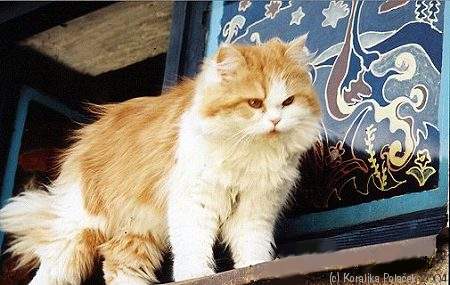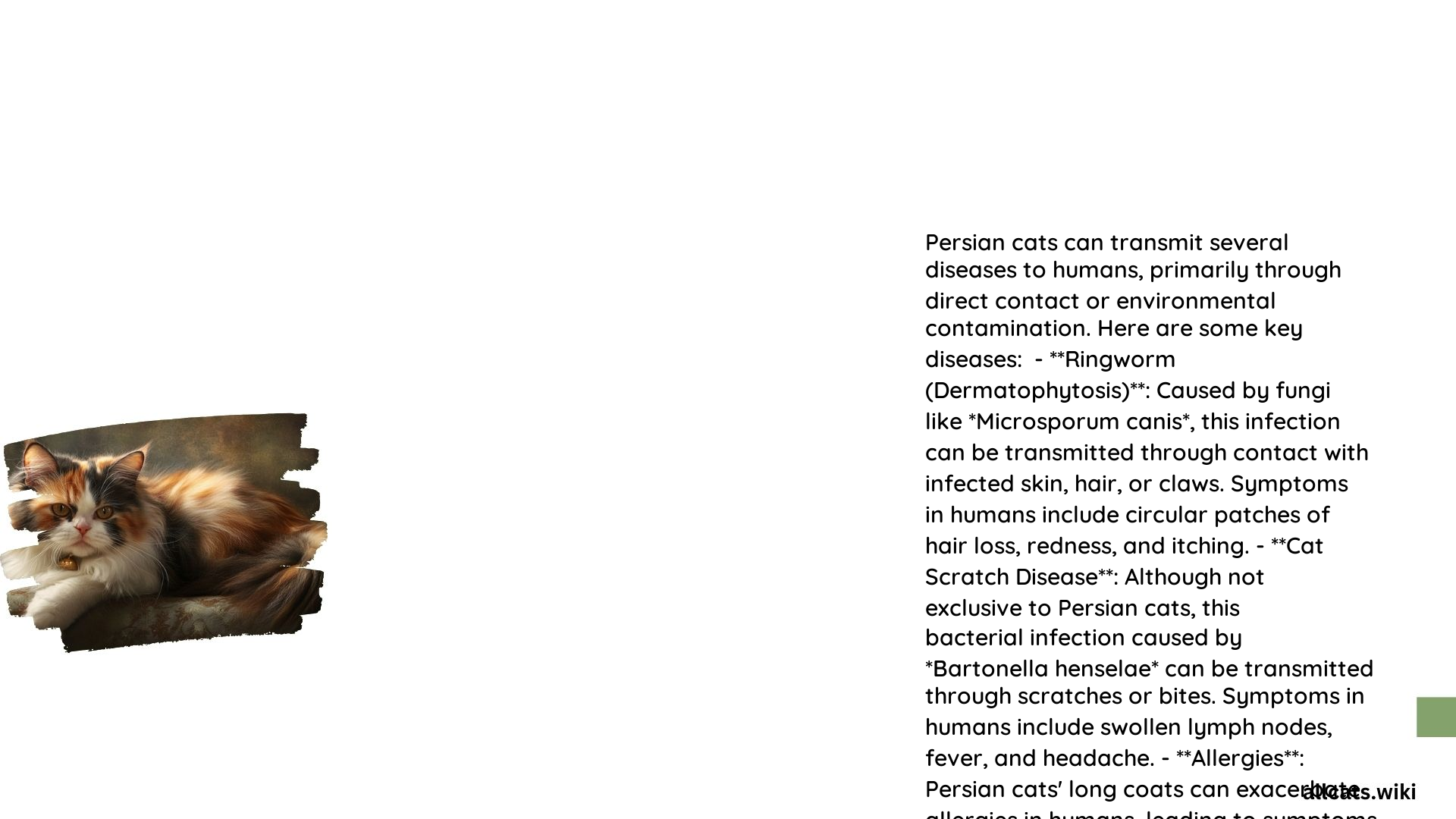Persian cats are known for their distinctive appearance, but they can also pose some health risks to their human owners. While these felines do not directly transmit diseases, their unique characteristics and health conditions can indirectly impact human well-being. In this comprehensive blog post, we’ll explore the common health issues associated with Persian cats and their potential implications for human health.
What Are the Common Health Issues in Persian Cats?

Persian cats are prone to several health conditions that can affect their overall well-being. Some of the most prevalent issues include:
- Polycystic Kidney Disease (PKD): This genetic disorder causes the formation of cysts in the kidneys, leading to progressive kidney damage.
- Brachycephalic Syndrome: This respiratory condition is characterized by a shortened skull and can cause breathing difficulties in Persian cats.
- Hypertrophic Cardiomyopathy: This heart disease is common in Persian cats and can lead to heart muscle thickening and impaired cardiac function.
- Dental Disease: Persian cats are susceptible to dental problems, such as tartar buildup, gum inflammation, and tooth loss.
How Can Persian Cats Transmit Diseases to Humans?

While Persian cats do not directly transmit diseases to their human owners, there are some indirect ways in which they can impact human health:
- Zoonotic Diseases: Like other cats, Persian cats can potentially carry and transmit zoonotic diseases, such as:
- Cat Scratch Disease: Caused by the bacterium Bartonella henselae, this disease can be transmitted through scratches or bites from infected cats.
- Ringworm: A fungal infection that can be contracted through contact with an infected cat’s skin or fur.
- Toxoplasmosis: A parasitic infection that can be transmitted through contact with contaminated feces or undercooked meat.
What Are the Risks Associated with Owning a Persian Cat?
Owning a Persian cat comes with several risks and considerations that owners should be aware of:
-
Health Impacts on Humans: While the direct health risks from Persian cat diseases are minimal, the emotional and financial burdens of caring for a cat with chronic health issues can be significant. Owners must consider the costs of veterinary care, including regular check-ups, medications, and potential surgeries.
-
Preventative Measures: Regular grooming, dental care, and veterinary check-ups are crucial for Persian cat owners. Ensuring that their cats are up-to-date on vaccinations and parasite control measures can help minimize the risk of zoonotic diseases.
Factual Data and Specific Examples
-
Costs: The cost of caring for a Persian cat with health issues can be substantial. For example, treating polycystic kidney disease may involve annual ultrasounds and special diets, which can cost several hundred dollars per year. Dental care, including regular cleanings and potential surgeries, can also be expensive.
-
Care Schedules: Owners should plan for daily grooming to prevent matting and tangling of the coat, weekly nail trimming, and regular veterinary check-ups. A typical care schedule might include:
- Daily: Grooming, feeding, and monitoring health.
- Weekly: Nail trimming, cleaning of the face and eyes.
- Monthly: Flea and tick prevention, heartworm medication.
-
Annually: Veterinary check-ups, vaccinations.
-
Recommended Products or Treatments: High-quality food, regular grooming tools (like metal combs), and veterinary-recommended medications are essential. For skin conditions, antifungal shampoos and medications may be prescribed.
Behavioral Aspects and Hands-On Solutions
-
Behavioral Aspects: Persian cats are known for their calm and quiet nature, but they can be prone to obesity due to their sedentary lifestyle. Encouraging gentle exercise and maintaining a healthy diet is crucial.
-
Hands-On Solutions: To manage the risks associated with owning a Persian cat, owners should:
- Groom Regularly: Daily grooming helps prevent skin conditions and reduces the risk of matting and tangling.
- Monitor Health: Regular veterinary check-ups can help detect health issues early.
- Maintain Hygiene: Keeping the cat’s environment clean and ensuring good hygiene practices can reduce the risk of zoonotic diseases.
In conclusion, while Persian cats are beloved companions, their unique health characteristics and susceptibility to certain conditions can indirectly impact human health. By understanding the potential risks and taking proactive measures, Persian cat owners can ensure the well-being of both their feline friends and themselves.
References:
